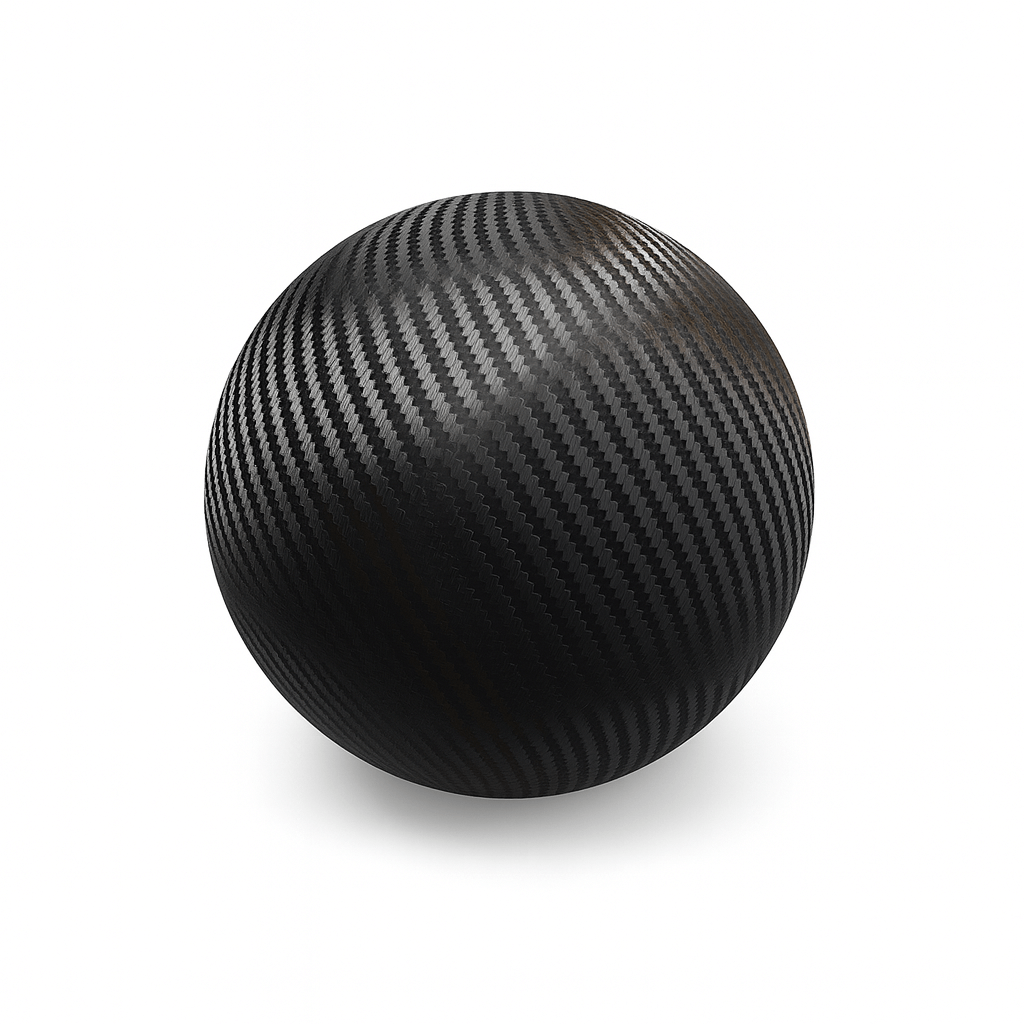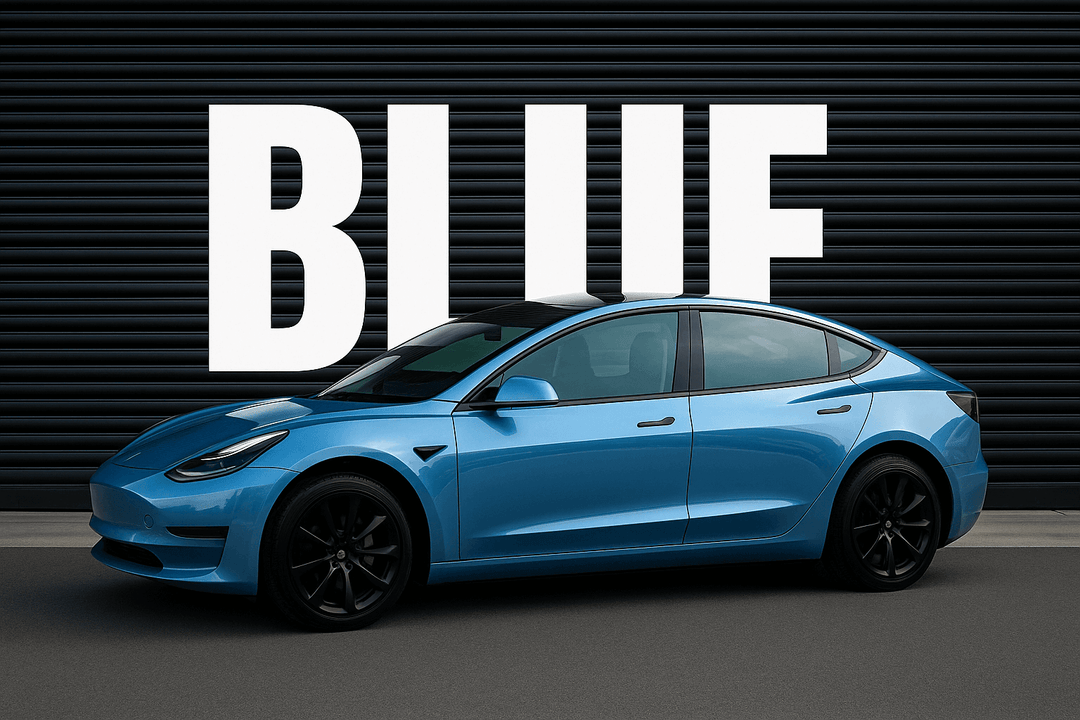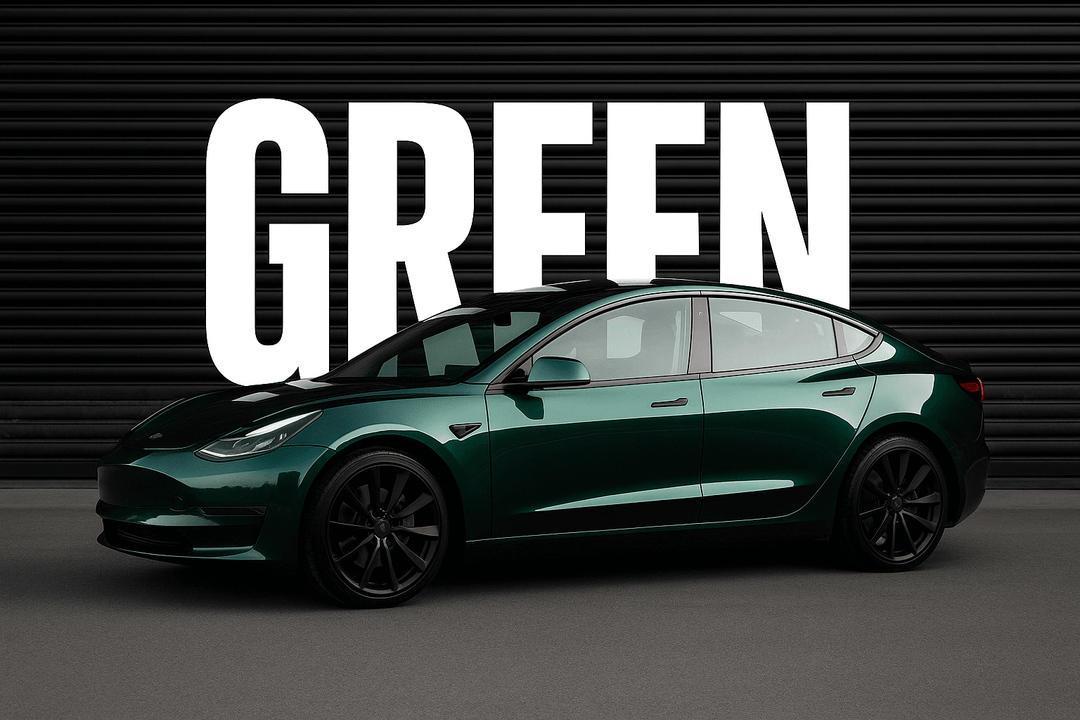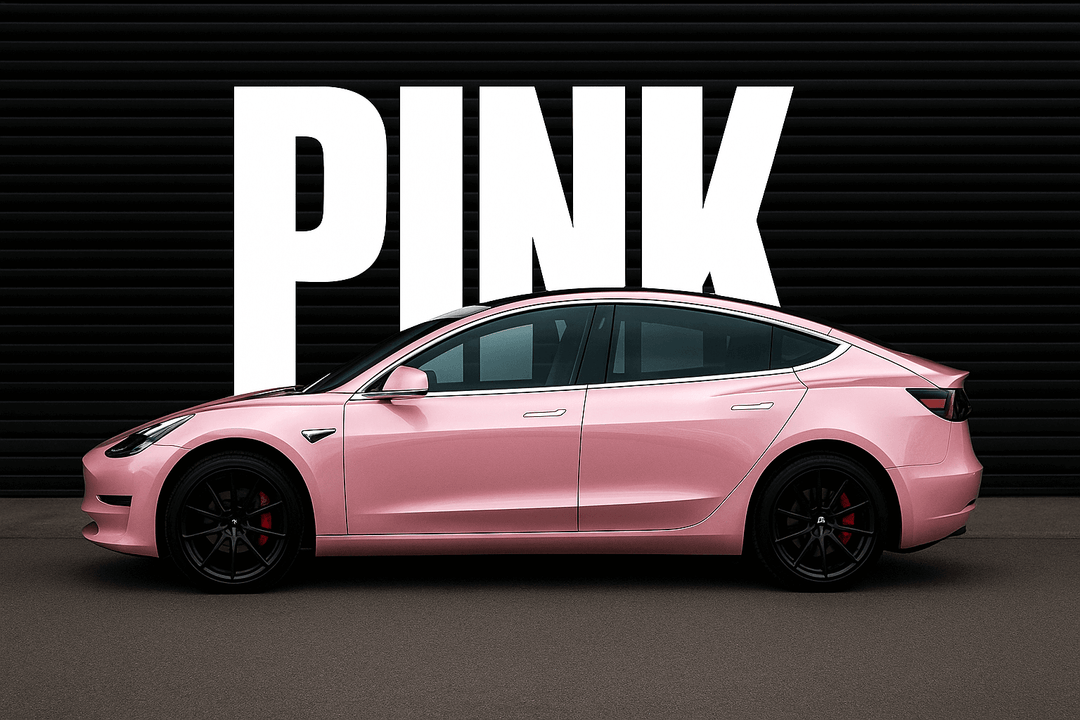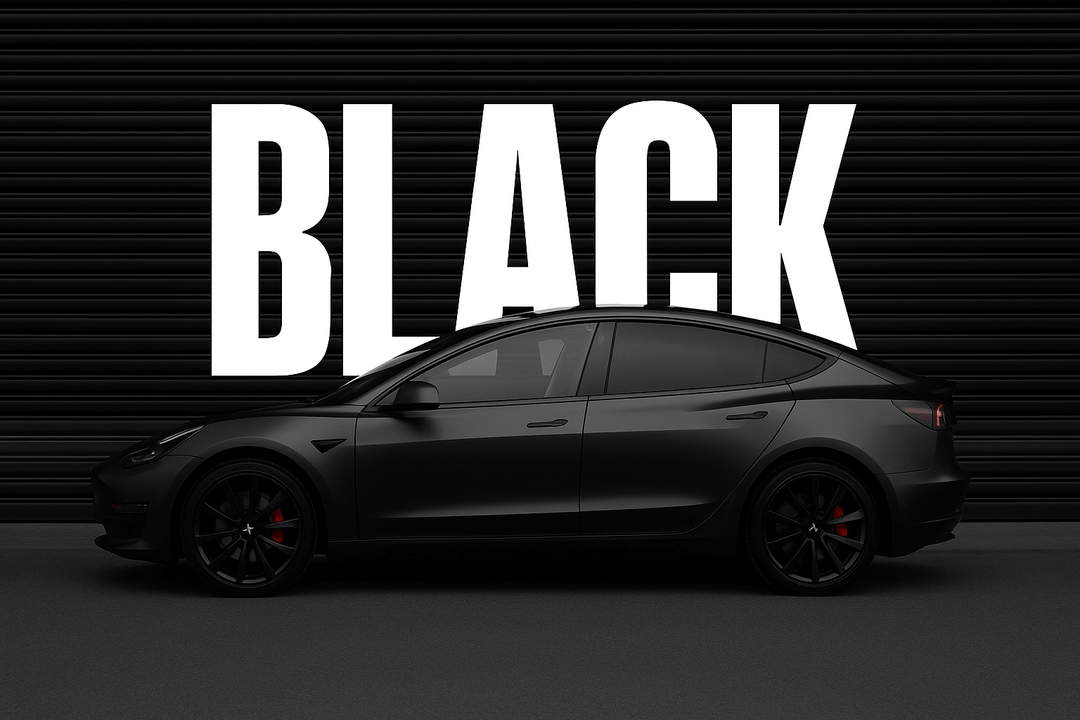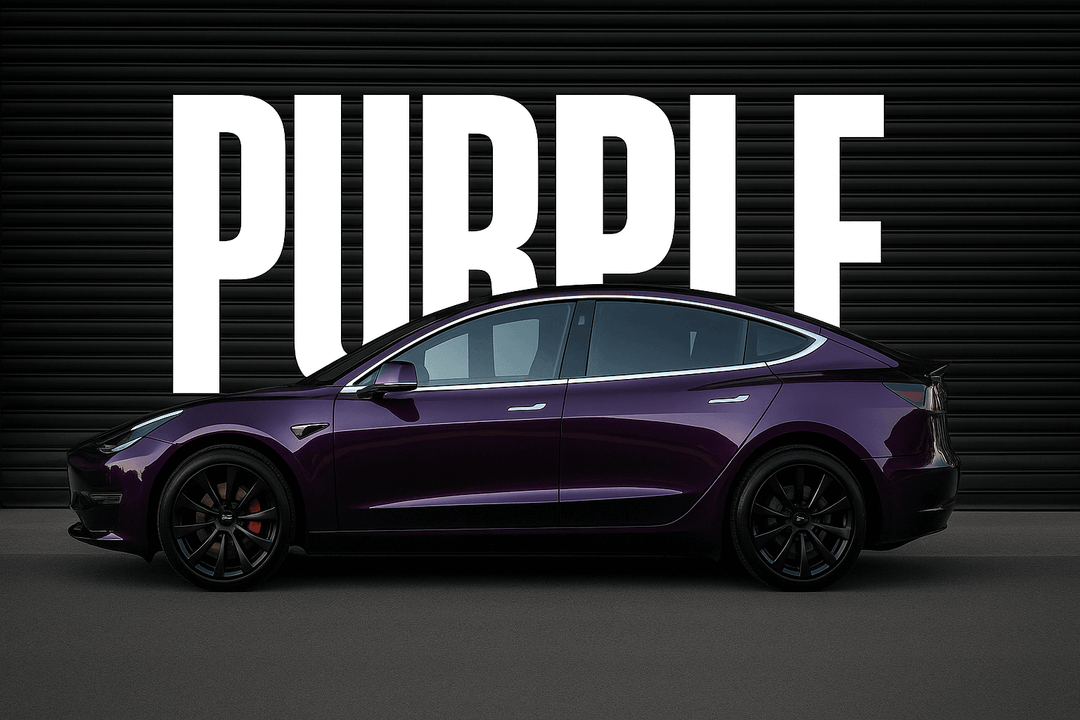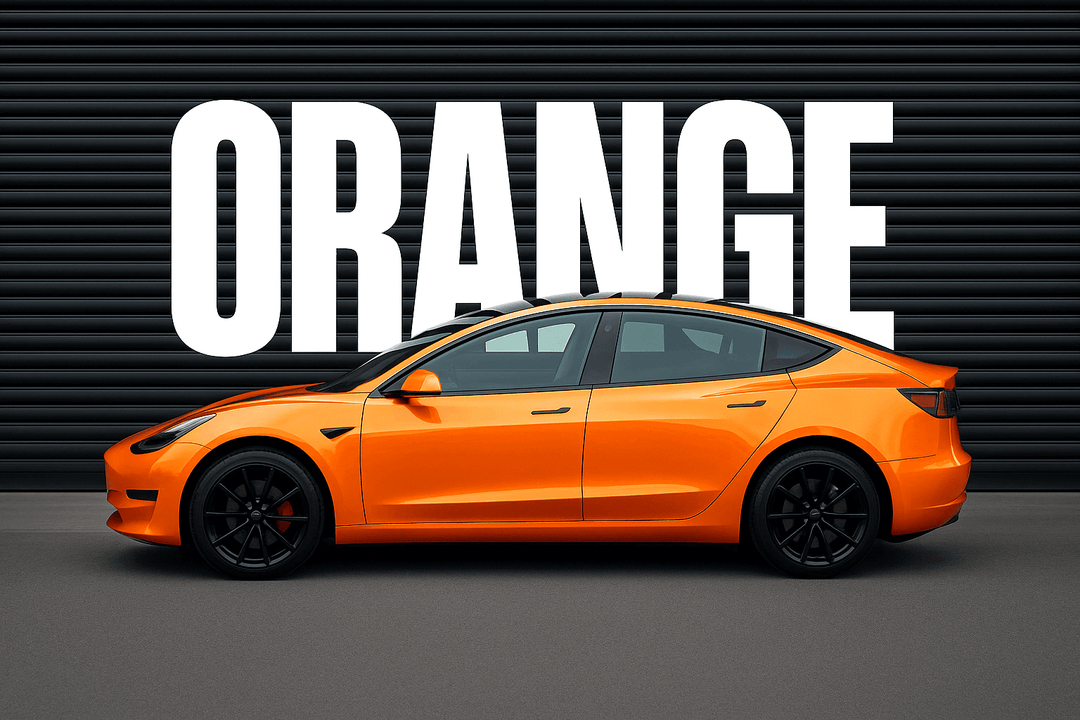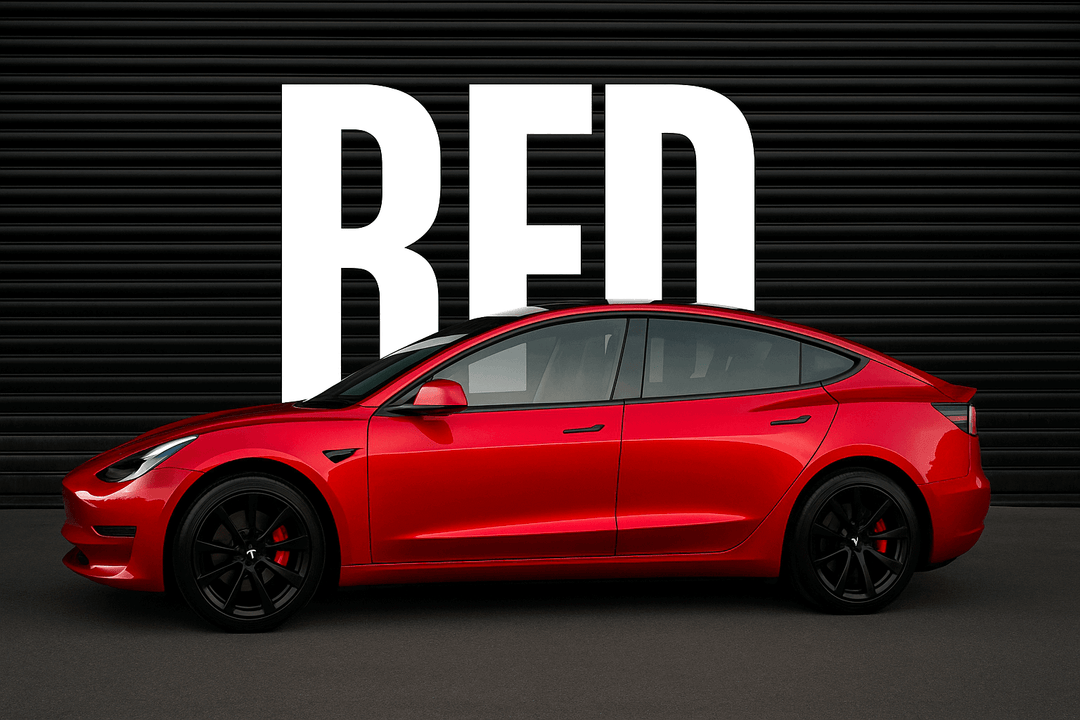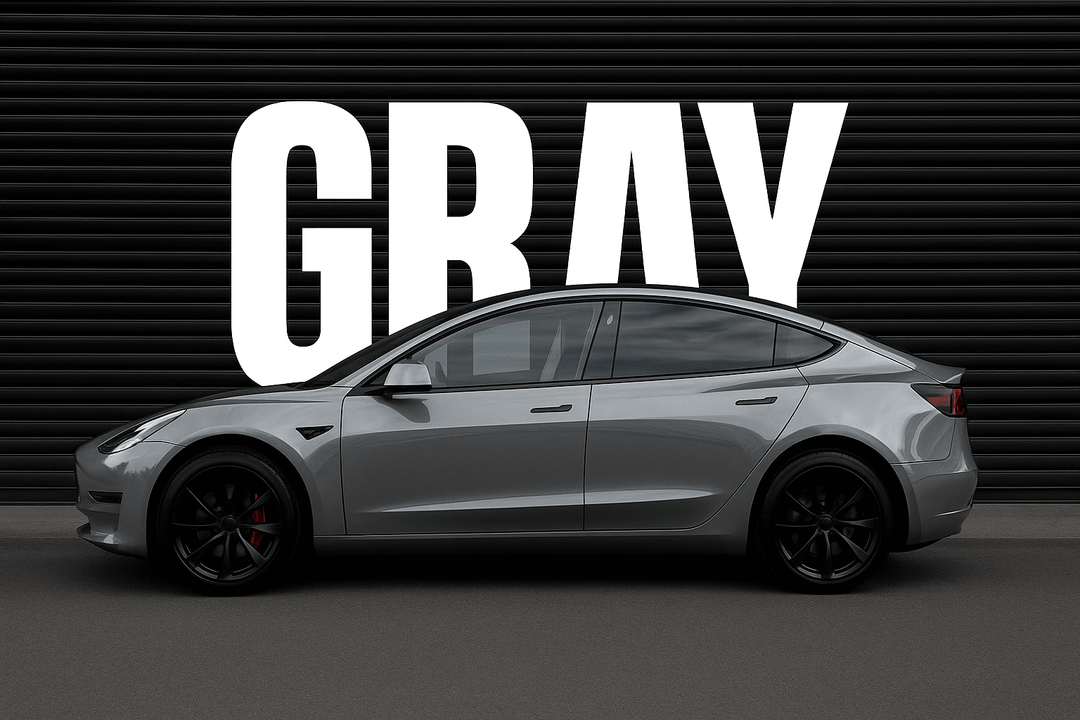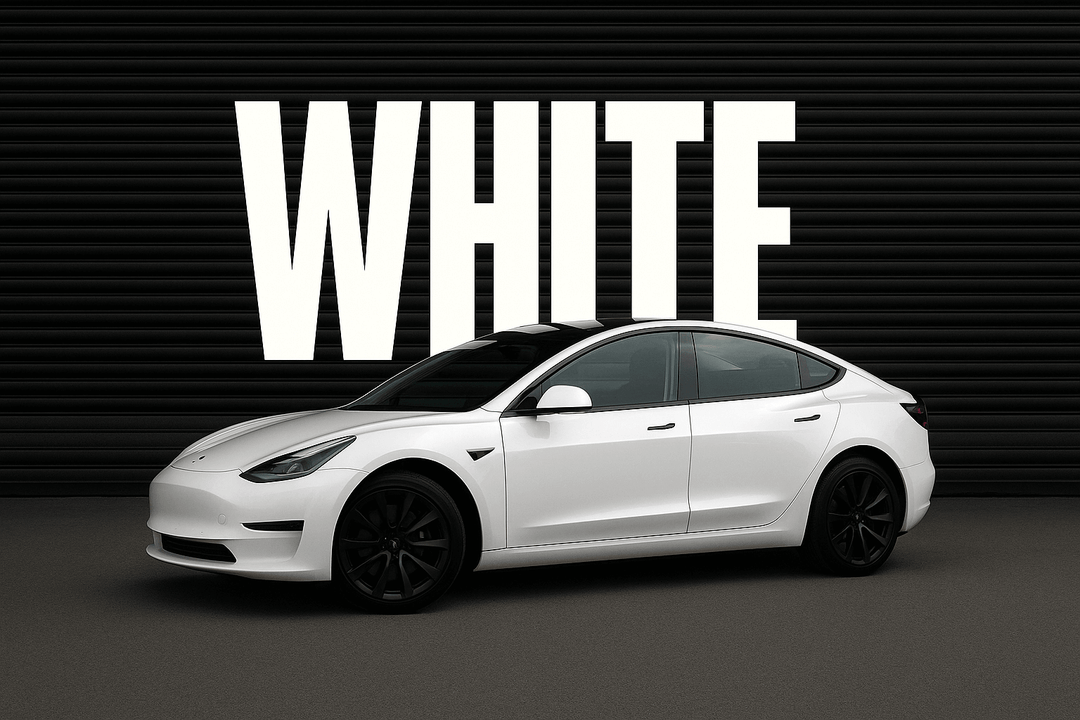Headlight Tint Laws by State
Headlight tinting might seem like a minor modification, but for car owners, it carries significant consequences. A tinted lens can give your vehicle a bold, custom look while also protecting against scratches and UV damage. But if the film darkens your beams too much or shifts them away from white, you could face traffic tickets, failed safety inspections, or worse—compromised visibility when you need it most.

The challenge is that headlight tint laws aren’t uniform across the country. While federal standards like FMVSS No. 108 establish baseline lighting performance requirements, every state builds on those rules in its own way. Some states strictly prohibit any film that alters brightness or color, while others allow clear or lightly tinted protective covers. That means what’s acceptable in one state could be illegal just across the border.
This guide breaks down headlight tint laws by state, so you know exactly where you stand before applying film to your lights. Whether you’re customizing your ride or simply trying to stay compliant, understanding these laws is the key to keeping your car road-legal and safe.
Legal Framework & Key Definitions You Need to Know
Federal / Baseline Standards
Before diving into the state-by-state breakdown, it’s important to understand the federal rules that set the foundation for all headlight regulations in the U.S.
The key law is Federal Motor Vehicle Safety Standard (FMVSS) No. 108, which governs all lighting equipment on passenger vehicles. This standard requires headlights to meet strict performance benchmarks so that every car on the road provides safe, reliable illumination. The rules specify that headlights must:
-
Maintain brightness: Lamps must emit enough light to allow drivers to see clearly at night and ensure other motorists can see them. Any film, tint, or cover that reduces this output risks violating the standard.
-
Stay within approved color ranges: Headlights are legally required to produce white light. While some states permit yellow for auxiliary lamps, the main headlamps cannot be altered to blue, red, or any shade that mimics emergency vehicles.
-
Preserve beam pattern: The beam must project in a way that illuminates the road without creating glare for oncoming drivers. Any material that scatters or distorts the beam can make a vehicle non-compliant.
States layer their own laws and enforcement processes on top of FMVSS 108. That means while the federal rules set the minimum safety requirements, state regulations often add restrictions, penalties, and inspection standards. The result is a patchwork system where even small differences in film type or light color can be the difference between passing inspection or getting a ticket.
But the baseline is clear: headlights must remain bright, white, and properly aimed. Any tint that interferes with those three criteria is almost always considered illegal.
Key Technical Definitions
If you want to stay compliant, you need to learn the language behind headlight tint laws and understand that regulators and inspectors use a few specific measurements and standards to determine what’s legal and what isn’t.
Visible Light Transmission (VLT)
VLT measures the percentage of light that passes through a lens or film. A higher VLT means more light gets through. For headlights, the expectation is very high—close to 100%. Even small reductions can compromise nighttime visibility and usually fail legal standards.
Net VLT (Film + Glass Combined)
When a tint film is applied, the total light that reaches the road depends on both the film and the glass itself. This is called “net VLT.” For example, a headlamp lens may already block a small percentage of light. Add a smoked film, and the combined effect may cut output below safe levels, even if the film itself seems light.
Reflectance, Glare, and Reflectivity Limits
Some films don’t just reduce brightness—they reflect light. Highly reflective surfaces can cause glare for other drivers, creating a safety hazard. Laws often prohibit mirrored or glossy films that bounce headlight beams in unintended directions.
Color Restrictions
Headlamps are required to emit white light, with some states allowing yellow as an alternative. Other colors—especially red, blue, or green—are prohibited because they can mimic emergency or specialty vehicles. Even subtle color shifts caused by tinted films can be grounds for a violation.
Clear Protective Films vs. Tinting Films
There’s an important difference between films designed for protection and those meant for styling. Clear paint protection films (PPF) shield lenses from rock chips, UV damage, and scratches without affecting brightness or color. These are generally legal nationwide. In contrast, “tinting” films that darken or recolor the beam are almost always considered non-compliant when applied to primary headlamps.
Enforcement & Inspection
How Illegal Tints Are Detected
Law enforcement officers can often identify non-compliant tint at a glance. Headlights that appear dim, smoked, or tinted in colors other than white or yellow will attract attention quickly. In some states, officers carry light transmission meters to measure VLT directly, much like they do for window tint. During annual or biennial inspections, certified inspectors may check beam brightness, alignment, and color. If the tint noticeably reduces output or alters the beam pattern, the vehicle will fail inspection.
Prohibited vs. Limited vs. Allowed
-
Prohibited: Dark films, colored tints (blue, red, green, or purple), or reflective overlays on primary headlights. These are illegal in nearly every state.
-
Limited: Some states allow selective yellow for fog lamps or permit clear protective films with a slight tint, provided they don’t affect brightness or color.
-
Allowed: Transparent PPF-style covers that serve only to protect the lens without altering light output or hue. These typically pass both inspections and roadside checks.
Penalties and Consequences
The severity of penalties depends on the jurisdiction:
-
Fix-it tickets: In many cases, an officer will issue a correctable citation. You’ll be required to remove the illegal tint and show proof of compliance within a set timeframe.
-
Fines: Repeat violations or refusal to correct the issue can lead to fines ranging from $50 to several hundred dollars, depending on the state.
-
Inspection failures: If your car is subject to state safety inspections, tinted headlights can cause automatic failure, meaning you won’t be able to register or renew your vehicle until the problem is resolved.
What’s Actually Legal vs. What’s Usually Illegal
Headlight tint is one of those modifications that can blur the line between style and legality. While many car owners love the sleek look of smoked or colored lenses, most states see them as a safety risk. Understanding the difference between what’s typically prohibited, what’s allowed, and where flexibility exists can help you avoid unnecessary fines or inspection failures.
The General Rule: Dark or Colored Headlamp Tint Is Illegal
Primary headlamps are considered essential safety equipment, which means they’re subject to the strictest standards. In nearly every state, dark tint films or overlays that reduce brightness or alter the beam color are prohibited. Federal law requires headlights to emit effective white light, and state inspections reinforce this rule. Blue, red, green, or any other non-white hues are universally banned since they can mimic emergency or specialty vehicles.
States That Allow Clear Protective Films
The one major exception involves clear or nearly clear protective films, often sold as PPF (paint protection film). These overlays are designed to guard lenses against UV rays, rock chips, and scratches without affecting light output. Because they don’t change brightness or color, they’re legal in most states. Some drivers choose a very light smoke shade, but even then, the film must not reduce visibility enough to violate local inspection requirements.
Partial Flexibility: Fog Lamps, DRLs, and Auxiliary Lights
Unlike primary headlamps, fog lamps and auxiliary lighting often have more lenient rules. Selective yellow overlays are permitted in several states, since they can reduce glare and improve visibility in poor weather. Some states also allow tinted films on daytime running lamps (DRLs) or other non-primary lighting, provided they remain bright, non-reflective, and non-distracting. The takeaway: while fog and auxiliary lights may offer more room for customization, you still need to verify what your specific state allows.
Common Misunderstandings and Myths
A few myths often trip up car owners:
-
“Light smoke is always legal.” Even a light film that reduces brightness can fail inspection.
-
“If it’s legal on windows, it’s legal on lights.” Headlight and taillight laws are much stricter than window tint regulations.
-
“It’s okay if my state doesn’t check.” You may still be cited by law enforcement, even without inspections.
-
“If it’s sold online, it must be legal.” Many aftermarket tint products are marketed as “show use only” and aren’t intended for on-road driving.
Driving Across State Lines
Another important factor is interstate travel. What’s permitted in your home state may not be legal elsewhere. For example, some states allow yellow fog lamps, while others require all forward-facing lights to be white. If you cross state lines with tinted lights, you risk being ticketed under that state’s laws, regardless of your home registration. To stay safe, stick with clear protective films for headlights and verify local rules for fog lamps and auxiliary lighting before customizing.
50-State (and DC) Headlight Tint Laws Summary
|
State / DC |
Status for Headlight Tint |
Notes / Conditions / Exceptions |
|
Alabama |
Prohibited |
Only clear protective films; fog / auxiliary lighting may have more leeway |
|
Alaska |
Prohibited |
Headlamps must be white; no dark/colored overlays allowed |
|
Arizona |
Limited |
Headlamps must remain white; fog / auxiliary may allow selective yellow |
|
Arkansas |
Prohibited |
No darkening or color changes on required lamps |
|
California |
Prohibited |
Headlamps must emit white light; fog lamps may be white or yellow |
|
Colorado |
Prohibited |
Covers or films that reduce output not allowed on required lamps |
|
Connecticut |
Prohibited |
Headlamps must remain white and unobstructed |
|
Delaware |
Prohibited |
Tint or covers that diminish effectiveness are disallowed |
|
D.C. |
Prohibited |
Headlights must be unobstructed and emit white light |
|
Florida |
Prohibited |
No deviation from white; tinted headlamps illegal |
|
Georgia |
Prohibited |
No colored or darkened headlamps permitted |
|
Hawaii |
Prohibited |
Must maintain effective white headlamp output |
|
Idaho |
Prohibited |
No lens coloring or dark films on required lamps |
|
Illinois |
Prohibited |
Any film reducing output may fail inspection |
|
Indiana |
Prohibited |
Obstructing or dimming required lamps is illegal |
|
Iowa |
Prohibited |
Headlamps must be white; no color-tint deviations |
|
Kansas |
Prohibited |
No dark films on headlamps; required visibility limits apply |
|
Kentucky |
Prohibited |
Films that reduce output are not permitted |
|
Louisiana |
Prohibited |
Only clear protective coverings allowed |
|
Maine |
Prohibited |
Inspection state; colored or dimmed headlamps fail |
|
Maryland |
Prohibited |
Covers or films that alter light output or color disallowed |
|
Massachusetts |
Prohibited |
Headlamps must remain white and unobstructed |
|
Michigan |
Prohibited |
No darkening or color changes on required lamps |
|
Minnesota |
Prohibited |
Films must not reduce beam or alter color |
|
Mississippi |
Prohibited |
Headlamps must emit white light only |
|
Missouri |
Prohibited |
Inspection rules generally disallow dark/colored films |
|
Montana |
Prohibited |
Maintain white color and required brightness |
|
Nebraska |
Prohibited |
No covering that reduces the required light output |
|
Nevada |
Prohibited |
Colored or dark films on headlamps disallowed |
|
New Hampshire |
Prohibited |
Inspection rejects tinted or obstructed headlamps |
|
New Jersey |
Prohibited |
Headlamps must be unaltered in brightness and color |
|
New Mexico |
Prohibited |
Headlamps required to remain white and unobstructed |
|
New York |
Prohibited |
Any tint or film that reduces output is illegal |
|
North Carolina |
Prohibited |
No alteration allowed on required headlamps |
|
North Dakota |
Prohibited |
Headlamps must remain white and effective |
|
Ohio |
Prohibited |
Changes to color or output subject to violations |
|
Oklahoma |
Prohibited |
No dark or colored films on primary headlights |
|
Oregon |
Prohibited |
Only clear protective films are accepted |
|
Pennsylvania |
Prohibited |
Inspection systems typically reject tinted headlamps |
|
Rhode Island |
Prohibited |
Headlamp output and color must be preserved |
|
South Carolina |
Prohibited |
No dark / colored overlays on headlights |
|
South Dakota |
Prohibited |
Required lamps cannot be tinted or colored |
|
Tennessee |
Prohibited |
Must maintain factory white light output |
|
Texas |
Prohibited |
No darkening or color shift of required lamps |
|
Utah |
Prohibited |
Headlamps must remain white and unobstructed |
|
Vermont |
Prohibited |
No dark or colored film on headlamps |
|
Virginia |
Prohibited |
Only clear protective film allowed on headlights |
|
Washington |
Prohibited |
Must maintain white light; no colored / dark films |
|
West Virginia |
Prohibited |
Tinting or covering reducing output is illegal |
|
Wisconsin |
Prohibited |
Headlamps must remain unaltered in brightness / color |
|
Wyoming |
Prohibited |
No tinted or colored overlays on required headlights |
Tips for Compliance & Best Practices
Even if you love the look of tinted lights, staying compliant is about more than just style. Here are practical ways to enjoy protective films and overlays without risking tickets, failed inspections, or reduced visibility.
Choosing the Right Product
For headlamps, the safest option is to stick with clear protective films. These give you impact and UV protection without altering brightness or color. If your state allows it, a very light smoke shade may be acceptable, but it must not noticeably dim the beam or shift it away from white.
For fog lights and auxiliary lamps, you often have more flexibility. Some states permit selective yellow or light smoke films that improve contrast in bad weather. Always check your state’s rules before applying.
Smart shopping checklist:
-
Headlamp Tint: Prioritize clear or ultra-light films that preserve beam quality.
-
Fog Light & DRL Tints: Explore styles where laws are more relaxed, like yellow overlays.
-
Application Tools: Have a squeegee, slip solution, heat gun, and felt-edge buffer ready for a clean install.
How to Measure VLT
Visible Light Transmission (VLT) is the key metric inspectors and officers use.
-
DIY Tools: Affordable handheld meters are available online to measure light transmission.
-
Shops: Window tint or lighting specialists can measure VLT accurately with calibrated equipment.
-
Rule of Thumb: If the lens looks dark indoors, it will appear even darker at night. Choose lighter shades to stay within safe limits.
Maintenance and Removal
Tint films need care to last and remain clear:
-
Clean with mild soap and water—avoid harsh chemicals that can cloud the film.
-
Inspect regularly for peeling, bubbling, or discoloration.
-
If you receive a citation or fail inspection, remove the film promptly. Most overlays peel off with heat and gentle lifting, though adhesive remover may be needed for residue.
Documenting Compliance
Save all purchase records and product spec sheets. Keep receipts, VLT data, and manufacturer compliance information in your glove box. If you’re questioned during an inspection or traffic stop, having this documentation can demonstrate that your film was designed to meet federal and state standards.
During Inspections or If Cited
-
Stay cooperative: Inspectors and officers enforce laws for safety reasons.
-
Provide documentation: Show your spec sheets and receipts if you believe your tint is compliant.
-
Fix-it tickets: Many states issue correctable citations. Removing non-compliant film and showing proof of correction usually resolves the issue.
-
Proactive approach: If you’re uncertain, remove questionable tint before inspection rather than risk automatic failure.
Darker Tints for Show-Stopping Style You Can Undo
There’s no denying the allure of a bold, smoked headlight. That deep, shadowed look gives your car an aggressive edge and turns heads instantly. The challenge is that dark tints rarely pass inspection and almost never meet state lighting laws. That’s where removable films change the game.
Engineered for Automotive Lenses
Unlike sprays or paints, Yeswrap’s darker headlight tint films are designed specifically for headlamps and fog lights. The adhesive bonds securely to the lens yet releases cleanly with the application of gentle heat. When it’s time to switch back to stock—or lighten up for inspection—your factory lenses remain crystal clear. No sanding, no harsh solvents, no permanent damage.
Why Film Beats Spray Every Time
Spray tints may look like an easy DIY solution, but once pigment seeps into edges and textures, it’s nearly impossible to remove. The result is often scratched or cloudy plastic that never returns to its original clarity. With precision-cut film, you skip the mess, overspray, and irreversible risk while still getting that dark, dramatic look.
Perfect for Show Use
Headlight tint film is ideal when you want to stand out at car meets, photo shoots, or rallies. Under show lights, smoked or blackout lenses deliver a sleek, custom presence that makes your vehicle unforgettable. And when the weekend’s over, you can peel the film off and be back to legal spec in minutes.
Dark Style Today, Clear Tomorrow
That’s the beauty of a removable tint kit: you can go bold when you want, and compliant when you need to. It’s flexibility, protection, and style—all without compromise.
Frequently Asked Questions
Is “light smoke” on headlights legal anywhere?
Sometimes—but the margin for error is very slim. Even a light smoke film that reduces brightness or shifts color away from white can cause you to fail inspection or get pulled over. Some states may not cite if the reduction is minimal, but enforcement is unpredictable. The safest route is to stick with clear protective films on headlamps and save style choices for fog lights or DRLs, where laws are usually more flexible.
Can I tint fog lights yellow?
In many states, yes. White and selective yellow are generally permitted for fog lamps, since they can improve visibility in rain or fog. However, headlamps must remain white. Always check your state’s vehicle code to confirm.
My friend passed inspection with smoked headlights—why?
Inspection standards and enforcement rigor vary. Some inspectors may overlook light films or not test output closely, but that doesn’t make it legal. If a police officer stops you, statutes—not past inspection results—determine whether your tint is compliant.
What is the darkest legal headlight tint percentage?
There is no widely accepted “darkest legal percentage” for headlights like there is for window tint. Federal and state rules require headlamps to emit effective white light at full strength. Any film that measurably reduces output is usually considered illegal. Clear or ultra-light protective films are the only safe options.








